| |
| |
| |
| |
| |
| Axios Generate |
| By Ben Geman and Andrew Freedman · Sep 23, 2024 |
| 🥞 Good morning! We're in New York City, but today's edition is no metropolis at just 1,170 words, 4.5 minutes. 📢 Scroll down for info on watching today's news-making Axios interview at Climate Week NYC. 📻 🚨Musical exclusive! The pro-geothermal nonprofit Project InnerSpace is dropping a new song and video† at Climate Week. You get the first look at "(Our Love is) Geothermal" ahead of its debut at their immersive Geothermal House because it's today's intro tune... |
| |
| |
| 🚨 Situational awareness: Watching for Helene |
| By Andrew Freedman |
| |
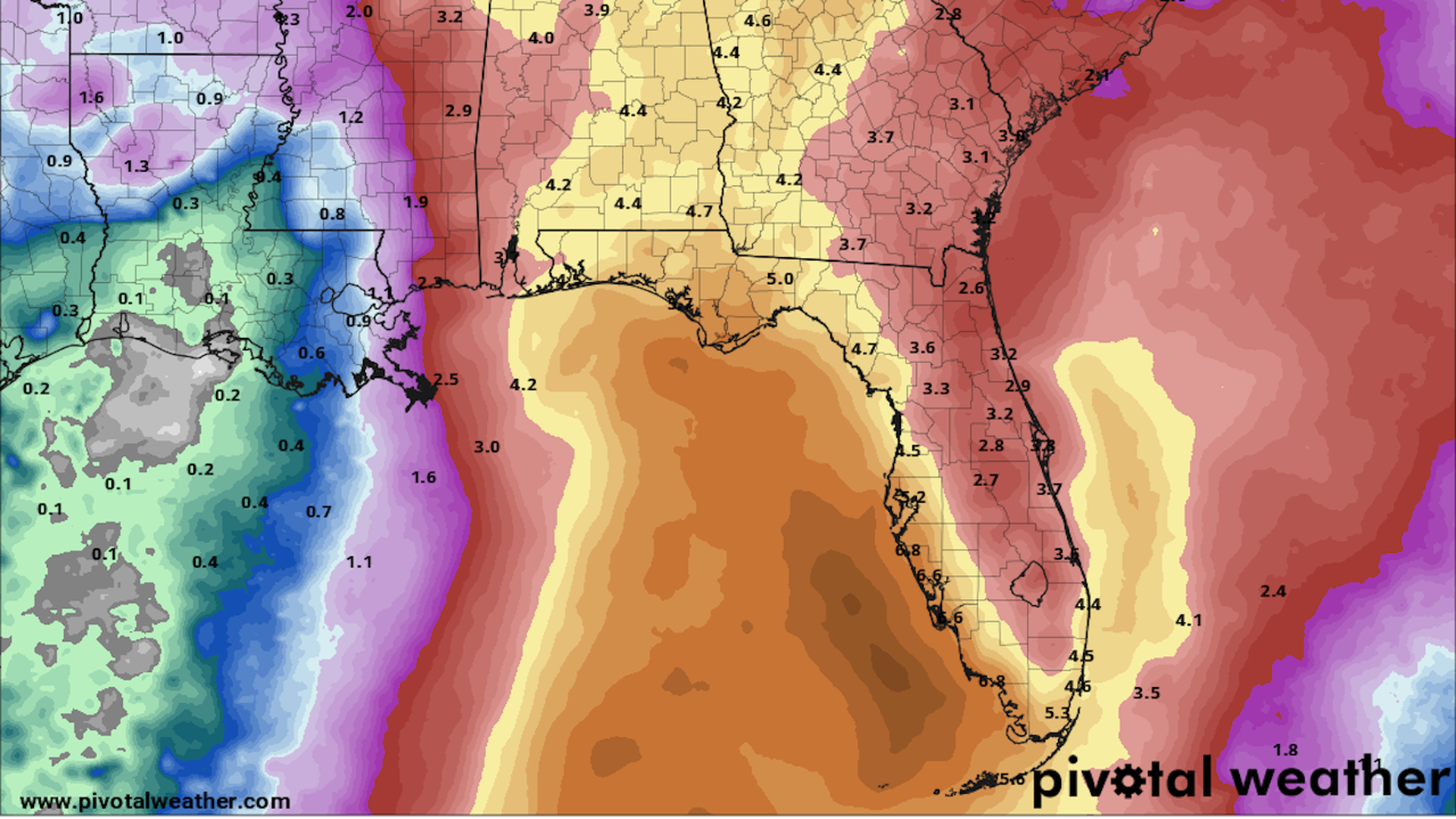 |
|
| Forecast rainfall over the next seven days, showing the areas most affected by what is expected to be Hurricane Helene. Image: Pivotal Weather via NWS |
| |
| The National Hurricane Center is monitoring the western Caribbean for the formation of what may become Hurricane Helene. Threat level: With record-warm Gulf waters and few other impediments, the storm could intensify into a formidable hurricane before hitting the northern Gulf Coast. - The most likely landfall location, per forecast data this morning, is somewhere along the Florida Panhandle on Thursday.
- A far broader region would be affected by high winds, storm surge flooding and heavy rains.
|
    |
| |
| |
| 1 big thing: Record-breaking spike in Amazon wildfires |
| By Andrew Freedman |
| |
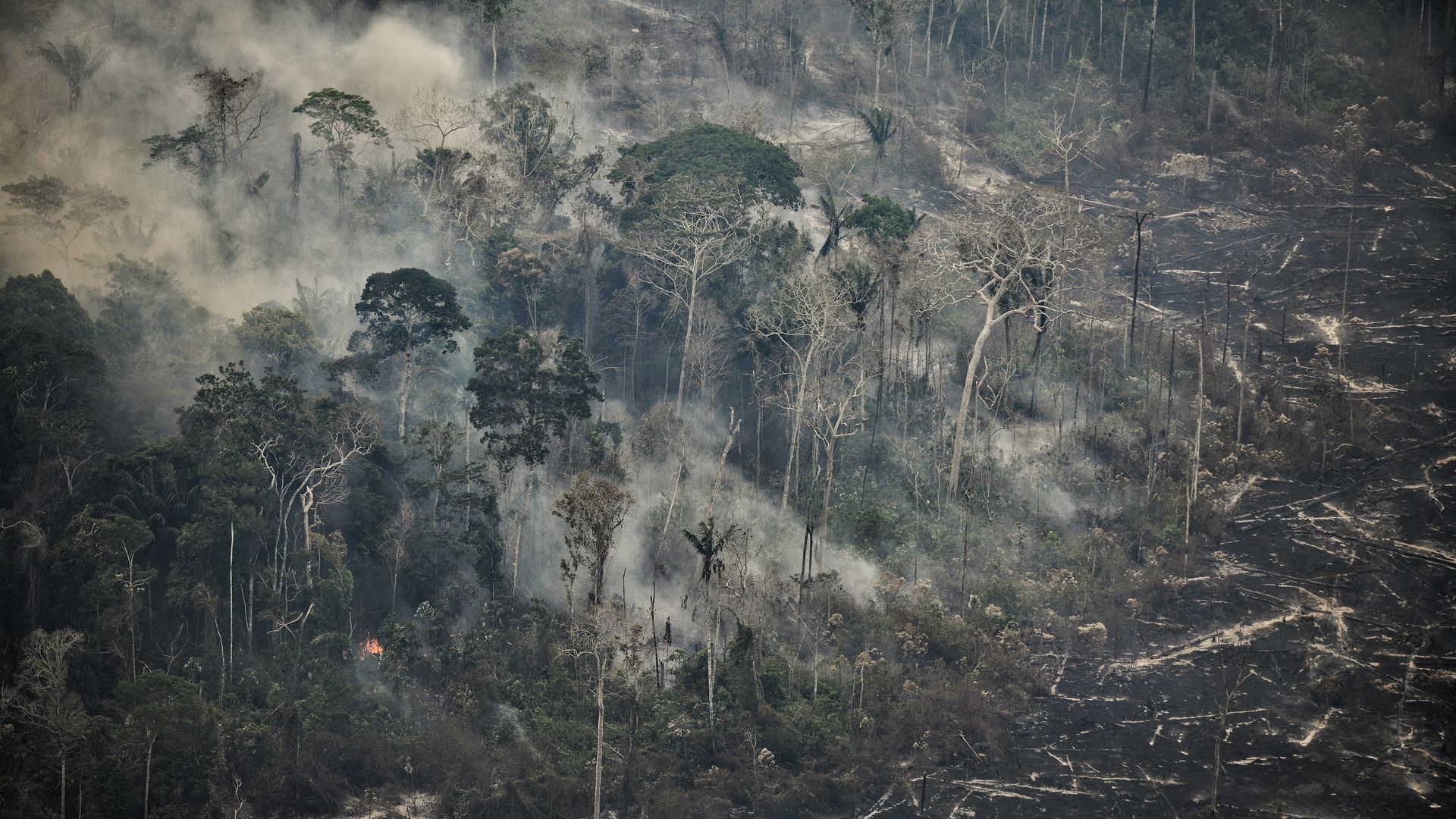 |
|
| Aerial view of wildfires burning in the Amazon rainforest in Peru on Sept. 17. Photo: Hugo La Rosa/AFP via Getty Images. |
| |
| Wildfires have spiked to new highs across huge parts of South America, with large blazes burning deep in the Amazon rainforest, new reports show. Why it matters: The fires are emitting record amounts of planet-warming greenhouse gases in a region that humanity counts on for being a net absorber of carbon dioxide. The big picture: The expansiveness and intensity of the ongoing blazes are another warning sign among a series of recent discoveries showing that the Amazon rainforest and Pantanal wetlands are under increasing pressure from a combination of human activities and extreme climate events. - A severe drought and unprecedented heat this year have resulted in a rare case in which the deep, normally moist rainforest is prone to burning.
- According to Global Forest Watch, a platform used to keep tabs on tropical forest destruction, the number of fire alerts detected via satellites and other sources has been 79% higher than average for this time of year.
- The European Union's Copernicus Atmosphere Monitoring Service (CAMS) also is out with new insights showing unusually high wildfire-related carbon emissions across large parts of the region, with record-high emissions from rainforests located in Bolivia in particular.
By the numbers: Estimated emissions from the Brazilian Amazon have been well above average so far this year, with record-high emissions in two key northern states that contain large concentrations of the rainforest — Amazonas and Mato Grosso du Sul, according to CAMS information gleaned from satellite monitoring of wildfire activity. - Bolivia's wildfire-induced carbon emissions so far this year are already at the highest cumulative annual total for that country in CAMS' 22-year data set, at 76 million tonnes of carbon. That beats out 2010, when annual emissions were 73 million tonnes of carbon.
- The fires have been fouling air quality across large parts of Brazil and nearby countries, "stretching from Ecuador to São Paulo," CAMS researchers said.
Between the lines: Destruction of the Amazon, which is happening across multiple countries, is occurring despite an ambitious but non-binding pledge more than 100 world leaders signed at the COP26 climate summit in Glasgow in 2021. The intrigue: Typically, the Amazon sees wildfires during the July to September period. However, recent record-shattering high temperatures in South America, combined with a long-term drought, have likely supercharged this fire season, CAMS scientists said. - According to the World Resources Institute, Amazon wildfires are now burning at least twice as much forest compared to 20 years ago.
|
    |
| |
| |
| 2. 👀 Watch news-making interviews at our Climate Week NYC events |
| By Ben Geman |
| |
 |
|
| Illustration: Tiffany Herring/Axios |
| |
| 🎙️We're hosting a slate of interviews with global climate leaders live from Axios House at Climate Week and the UN General Assembly: - Former U.S. Vice President Al Gore and former Secretary of State John Kerry at 9:10am ET. Watch here.
- Columbia University's Jason Bordoff, Energy Secretary Jennifer Granholm and The Rockefeller Foundation president Rajiv Shah at 12:20pm ET. Watch here.
- Climeworks CEO Christoph Gebald at 4:30pm ET. Watch here.
|
    |
| |
| |
| A message from Chevron |
| Innovating at Anchor to produce previously inaccessible oil & natural gas |
| |
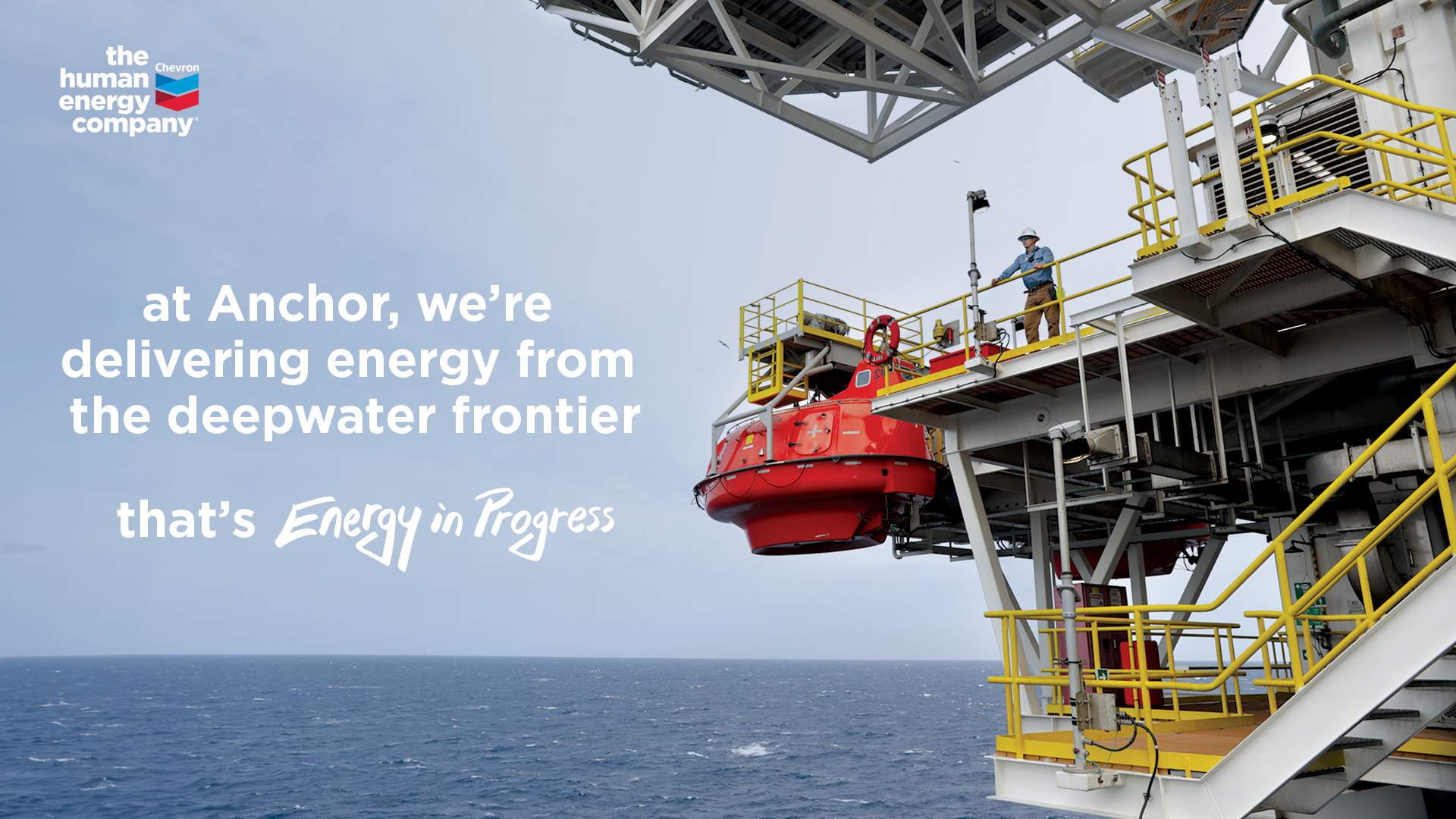 |
| |
| At our latest deepwater development, Anchor, Chevron is pioneering energy production at greater pressures — up to 20,000 psi — with the plan to deliver 300,000 net barrels of oil equivalent per day in the U.S. Gulf of Mexico by 2026. That's energy in progress. |
| |
| |
| 3. Green banks link arms to handle federal cash wave |
| By Ben Geman |
| |
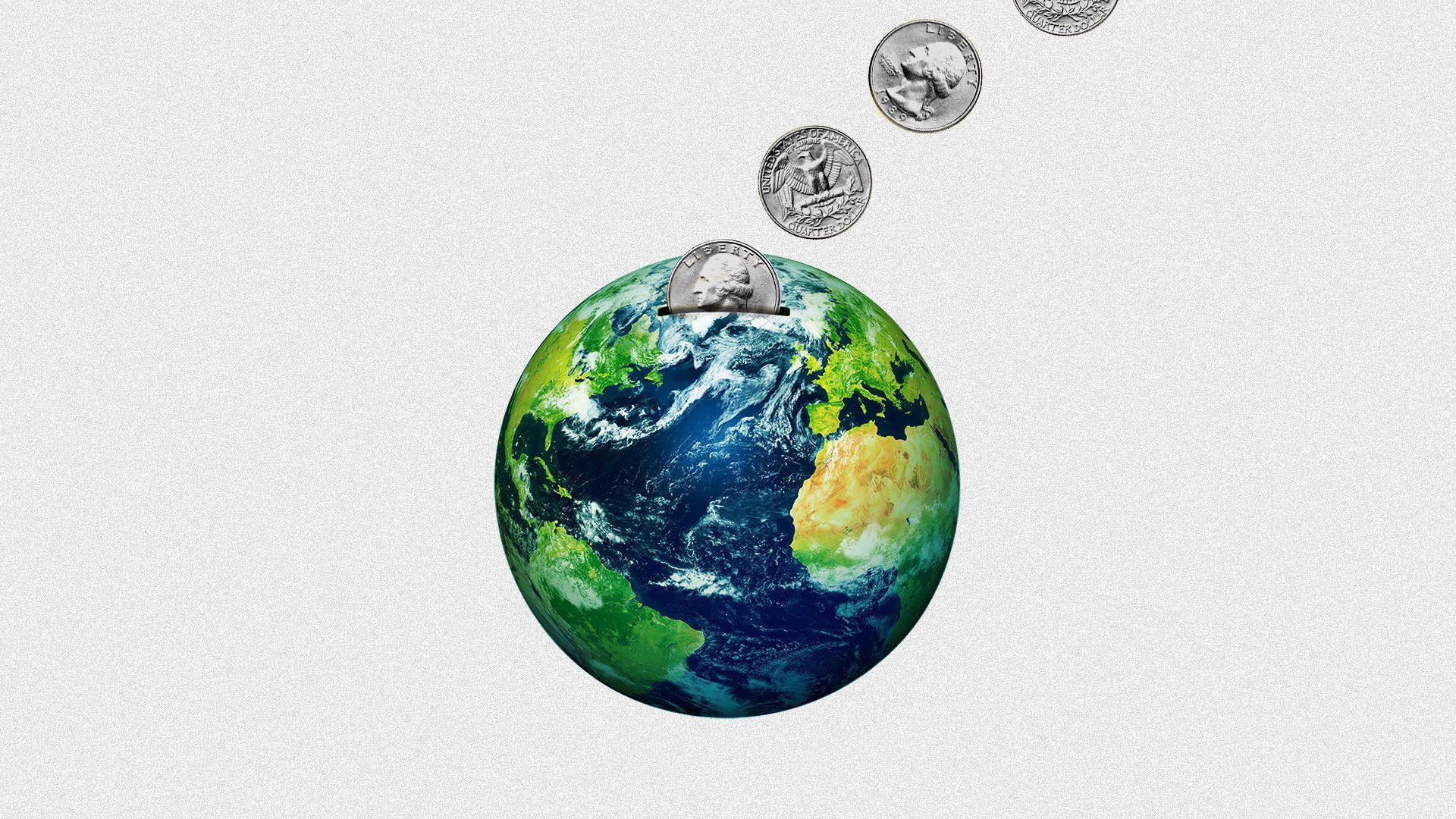 |
|
| Illustration: Aïda Amer/Axios |
| |
| Dozens of state and local banks that finance low-carbon energy projects this morning unveiled a new nonprofit industry group: the U.S. Green Bank 50. Why it matters: Unprecedented federal grants and tax breaks require lots of financial services — and new technical know-how in the green bank sector. Driving the news: U.S. Green Bank 50 is a collaborative hub for building and sharing best practices and other efforts. - Kirsten Stasio, CEO of the Nevada Clean Energy Fund, is acting executive director of the new group.
- One focus is enabling projects in underserved and marginalized communities.
State of play: The IRA provides hundreds of billions of dollars in tax credits, $27 billion in grants through the Greenhouse Gas Reduction Fund, and more. - New "direct pay" and "transferability" options give nonprofit actors new access to tax credits.
- Some banks are starting to offer "bridge loans" to entities like schools and churches that haven't previously had access to "clean energy" credits as non-taxable entities, a spokesperson said.
The bottom line: U.S. Green Bank 50 can provide "peer-learning" to problem solve and build new kinds of financial products, the spokesperson said via email. |
    |
| |
| |
| 4. Catch up quick: UN, minerals, COP29 |
| By Ben Geman |
| |
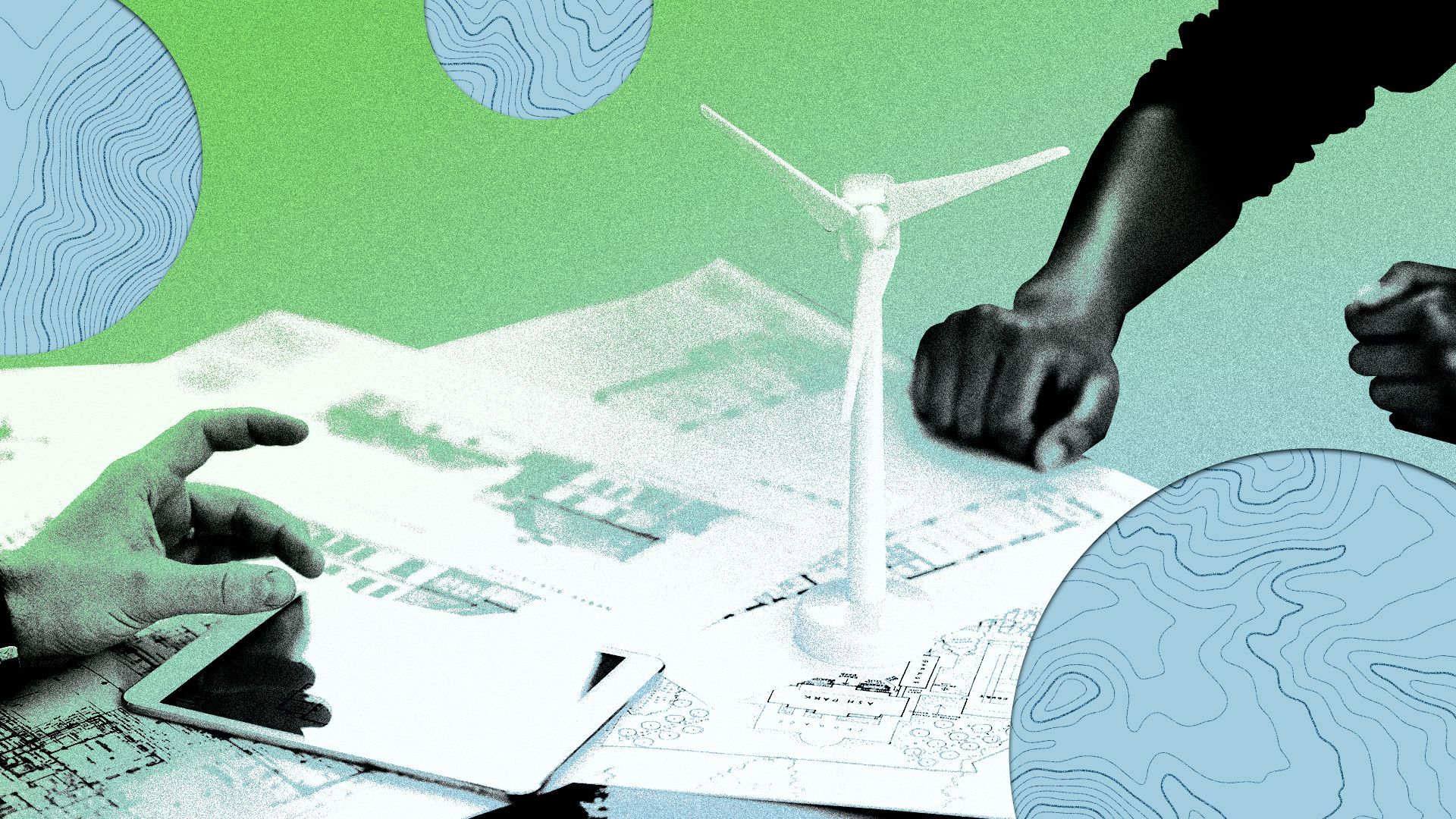 |
|
| Illustration: Annelise Capossela/Axios |
| |
| 🛢️ The broad "pact for the future" that UN members adopted yesterday after tense debate endorses "transitioning away from fossil fuels in energy systems" in an "equitable manner." - Why it matters: It re-ups the concept that first explicitly appeared, after fractious talks, in a consensus UN outcome at last year's COP28.
- Catch up quick: Low-lying states and activists feared backsliding when the language was absent from a prior "pact" draft.
- The bottom line: "Transition" text may have just become table stakes for UN climate negotiations, but turning the concept into reality is another thing entirely.
⛏️ Via the FT, members of the multinational Mineral Security Partnership are "directing their development finance and export credit agencies to work with private industry to support critical minerals projects." - Why it matters: It's the next step in the push to lessen China's dominance over supply chains needed for low-carbon energy and transport, the paper notes.
- What's next: More info on the financing network — the next phase of the MSP that includes the U.S. and EU — will arrive later today.
👋 Meet the new boss: Senegalese finance vet Ibrahima Cheikh Diong is the first head of the new global fund to compensate poor nations for climate harms, the UN announced. - Why it matters: The "loss and damage" fund — created at the 2022 UN climate summit — aims to help nations that played little role in causing global warming adapt to effects like stronger storms.
- Catch up quick: Diong, also a U.S. citizen, is with the Arab Bank for Economic Development in Africa.
- Reality check: The World Bank-administered fund only has pledges totaling $800 million to date, per COP29 organizers, who are pushing for new commitments. Reuters has more.
|
    |
| |
| |
| 5. Charted: Climate feels chill in voter-concern ranking |
| By Ben Geman |
| |
 Data: AP NORC poll; Chart: Axios Visuals Climate change lacks the political juice of several other big topics with the general electorate, new AP-University of Chicago polling shows. Why it matters: That gulf between climate and the economy in this month's poll helps explain why Kamala Harris is: - Giving climate policy relatively little time on the stump.
- Tethering it to jobs and pocketbook matters like insurance when it does come up.
Yes, but: Climate is highly motivating to key pockets of Democratic voters. Polling memo...topline results |
    |
| |
| |
| 6. ⚛️ Number of the day: over 22% |
| By Ben Geman |
| |
| That's how much Constellation Energy's stock soared on Friday's news it plans to re-start Unit 1 at Three Mile Island. Why it matters: The market is taking the restart and power purchase deal with Microsoft seriously, despite a long regulatory journey ahead. |
    |
| |
| |
| A message from Chevron |
| Innovating at Anchor to produce previously inaccessible oil & natural gas |
| |
 |
| |
| At our latest deepwater development, Anchor, Chevron is pioneering energy production at greater pressures — up to 20,000 psi — with the plan to deliver 300,000 net barrels of oil equivalent per day in the U.S. Gulf of Mexico by 2026. That's energy in progress. |
| |
| †A bit more about that song: Project InnerSpace worked with musical artists Mike Roberts and Will Hammond Jr., who previously teamed up for an R&B tune about heat pumps. - The idea, a Project InnerSpace rep tells us, is engaging the public in a fun way about climate solutions.
📨 Did a friend, colleague or even a frenemy send you this newsletter? Welcome, please sign up. 🙏 Thanks to Chris Speckhard and Chuck McCutcheon for edits to today's edition, along with the brilliant Axios Visuals team. |
 | | Dive deeper into the future of energy | | |

0 comentários:
Postar um comentário